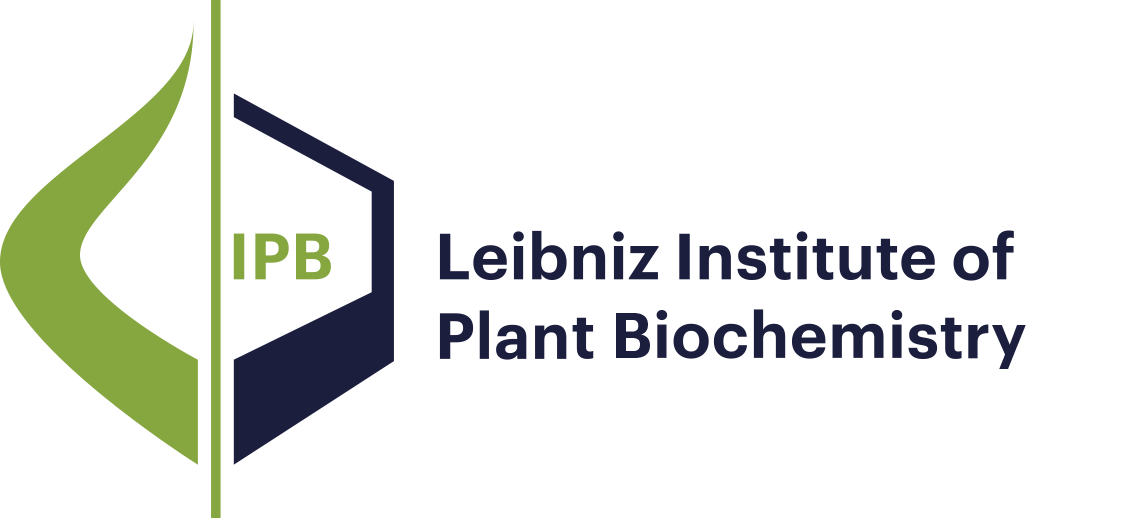Publications - Cell and Metabolic Biology
- Results as:
- Print view
- Endnote (RIS)
- BibTeX
- Table: CSV | HTML
Publications
Publications
Publications
This page was last modified on 27 Jan 2025 .
Research Mission and Profile
Molecular Signal Processing
Bioorganic Chemistry
Biochemistry of Plant Interactions
Cell and Metabolic Biology
Independent Junior Research Groups
Program Center MetaCom
Publications
Good Scientific Practice
Research Funding
Networks and Collaborative Projects
Symposia and Colloquia
Alumni Research Groups
Publications
Publications - Cell and Metabolic Biology
Publications
Plants have the ability to alleviate the harmful effects caused by abiotic and biotic stress. Phytohormones play a very important role in the acclimation to these stresses. To study the role of jasmonate in the acclimation to osmotic stress, an ALLENE OXIDE CYCLASE (AOC) mutant of rice (cpm2), disrupted in the biosynthesis of jasmonic acid (JA), and its wild type (WT) background were employed to investigate their responses to osmotic stress caused by treatment with polyethylene glycol (PEG) 6000. WT showed tolerance to osmotic stress, correlated with a fast transient increase of JA and JA-isoleucine (JA-Ile) in the shoots prior to an increase in abscisic acid (ABA), followed by a second increase in jasmonates when exposing to osmotic stress during 24 h. In roots, the pattern of hormonal increase was similar, but the response appeared to be faster, and remained transient, also with respect to low levels of jasmonates upon continuing osmotic stress. The mutant, which was containing extremely low levels of jasmonates, was hypersensitive to the stress. However, ABA accumulated in both, shoots and roots of cpm2, to similar (but not equal) levels as those seen in the WT, demonstrating that the biosynthesis or catabolism of ABA in response to osmotic stress is at least partially independent of JA, but can be modulated by JA. Our results suggest that jasmonates operate in parallel, presumably synergistically, to ABA, and are indispensable for osmotic stress tolerance in rice.
Publications
Genetic resources for the model plant Arabidopsis comprise mutant lines defective in almost any single gene in reference accession Columbia. However, gene redundancy and/or close linkage often render it extremely laborious or even impossible to isolate a desired line lacking a specific function or set of genes from segregating populations. Therefore, we here evaluated strategies and efficiencies for the inactivation of multiple genes by Cas9-based nucleases and multiplexing. In first attempts, we succeeded in isolating a mutant line carrying a 70 kb deletion, which occurred at a frequency of ~ 1.6% in the T2 generation, through PCR-based screening of numerous individuals. However, we failed to isolate a line lacking Lhcb1 genes, which are present in five copies organized at two loci in the Arabidopsis genome. To improve efficiency of our Cas9-based nuclease system, regulatory sequences controlling Cas9 expression levels and timing were systematically compared. Indeed, use of DD45 and RPS5a promoters improved efficiency of our genome editing system by approximately 25–30-fold in comparison to the previous ubiquitin promoter. Using an optimized genome editing system with RPS5a promoter-driven Cas9, putatively quintuple mutant lines lacking detectable amounts of Lhcb1 protein represented approximately 30% of T1 transformants. These results show how improved genome editing systems facilitate the isolation of complex mutant alleles, previously considered impossible to generate, at high frequency even in a single (T1) generation.
Publications
Soil pollutants may affect root growth through interactions among phytohormones like auxin and jasmonates. Rice is frequently grown in paddy fields contaminated by cadmium and arsenic, but the effects of these pollutants on jasmonates/auxin crosstalk during adventitious and lateral roots formation are widely unknown. Therefore, seedlings of Oryza sativa cv. Nihonmasari and of the jasmonate-biosynthetic mutant coleoptile photomorphogenesis2 were exposed to cadmium and/or arsenic, and/or jasmonic acid methyl ester, and then analysed through morphological, histochemical, biochemical and molecular approaches.In both genotypes, arsenic and cadmium accumulated in roots more than shoots. In the roots, arsenic levels were more than twice higher than cadmium levels, either when arsenic was applied alone, or combined with cadmium. Pollutants reduced lateral root density in the wild -type in every treatment condition, but jasmonic acid methyl ester increased it when combined with each pollutant. Interestingly, exposure to cadmium and/or arsenic did not change lateral root density in the mutant. The transcript levels of OsASA2 and OsYUCCA2, auxin biosynthetic genes, increased in the wild-type and mutant roots when pollutants and jasmonic acid methyl ester were applied alone. Auxin (indole-3-acetic acid) levels transiently increased in the roots with cadmium and/or arsenic in the wild-type more than in the mutant. Arsenic and cadmium, when applied alone, induced fluctuations in bioactive jasmonate contents in wild-type roots, but not in the mutant. Auxin distribution was evaluated in roots of OsDR5::GUS seedlings exposed or not to jasmonic acid methyl ester added or not with cadmium and/or arsenic. The DR5::GUS signal in lateral roots was reduced by arsenic, cadmium, and jasmonic acid methyl ester. Lipid peroxidation, evaluated as malondialdehyde levels, was higher in the mutant than in the wild-type, and increased particularly in As presence, in both genotypes.Altogether, the results show that an auxin/jasmonate interaction affects rice root system development in the presence of cadmium and/or arsenic, even if exogenous jasmonic acid methyl ester only slightly mitigates pollutants toxicity.
This page was last modified on 27 Jan 2025 .

